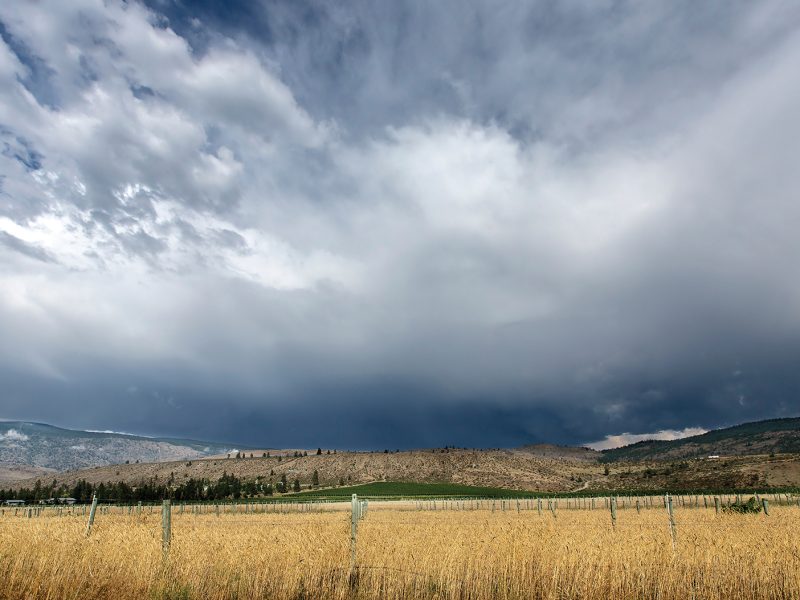ABBOTSFORD – Producers can’t control the weather, but they absolutely need the most accurate forecasts to determine the right times to plant, spray, harvest, and so on.
“Farmers need confidence in the forecast to do their work,” agricultural meteorologist Andy Nadler of Peak HydroMet Solutions in Campbell River told producers attending the Lower Mainland Horticultural Conference at the end of January.
Weather modelling isn’t an exact science but Nadler expects short-term weather forecasts to become more accurate within two to five years as artificial intelligence advances. In the meantime, Nadler encourages producers to use a few different tools to check weather forecasts.
While advances in computer modelling over the past few decades have delivered improved three, five and 10-day forecasting, Nadler says shorter-term weather reports may be more valuable to growers. Precipitation forecasts and modelling the duration of cold snaps like the one accompanying the Arctic outflow in January are examples.
Weather conditions are made up of precipitation, humidity, temperature, pressure, sky cover (sun/cloud) and wind. To create a forecast, data such as historical and current weather, the state of the atmosphere and ocean currents are run through complex computer models. Variables are tweaked slightly each time the models are run. After many possible outcomes, the result is a most likely weather scenario – commonly known as a forecast.
Environment and Climate Change Canada’s weather forecasts may be among the best-known in Canada, but there are many other trusted weather prediction organizations in the world. The European Centre for Medium-Range Weather Forecasts (ECMWF) generates 10-day hourly forecasts across the globe. The high-resolution, rapid refresh (HRRR) forecasts from the US National Oceanic and Atmospheric Administration is a real-time atmospheric model that forecasts weather every 15 minutes at a 3-kilometre resolution.
The US Global Forecast System (GFS) and North American Mesoscale (NAM) generate multiple grids of forecasts over North America at various horizontal resolutions. Meanwhile, ICON (Icosahedral Nonhydrostatic) is a suite of models created by the German national weather service.
“All forecasts are pretty good, but you need to find the ones that work for you,” said Nadler, showing how Environment and Climate Change Canada’s models only forecast weather for larger regions without the level of detail needed to understand incoming conditions for a specific farm property.
To help producers out, Nadler suggested a few options he likes.
Windy.com, a free app, allows users to drill down to a very specific location and see hourly predictions each day. Windy combines five of the international weather models mentioned above to make predictions. It also shows the nearest weather station to a specific location, fires, and wind speed and direction by the hour, a bonus for spray application.
The site MeteoBlue.com includes agricultural tools and provides daily forecasts, rating the accuracy of the prediction.
Farmwest.com shows information like evapotranspiration, moisture deficit and previous year’s moisture.
Additionally, Nadler says Google is working on an AI-based forecasting tool called GraphCast for medium-range forecasting. Rather than traditional numerical weather models, it uses a machine learning-based approach. It’s said that GraphCast predicts weather up to 10 days in the future with greater speed and accuracy than today’s leading forecast models.
No matter what forecast tool farmers prefer, Nadler suggests farmers compare several if they want increased certainty that predictions or measures are accurate.
“They need to be away from things like water bodies and buildings which can impact readings and also away from equipment paths to prevent them being damaged,” said Nadler. “You’re likely looking at $1,000 and up for a good one.”
Nadler says 25 new on-farm weather stations have been installed in the Okanagan since 2018 as part of the provincially funded BC Decision Aid System. Some producers are also purchasing their own stations. If producers allow, their privately owned machines can also feed data into larger network systems, which is helpful.


 Awards generate buzz for BC beekeepers
Awards generate buzz for BC beekeepers